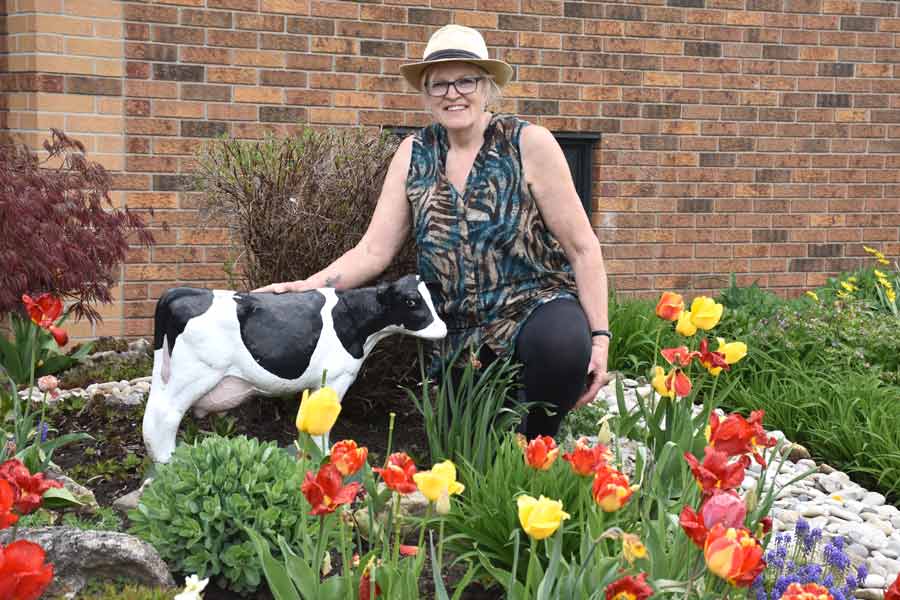ELORA – Cathy Clark was already a gardener when she was diagnosed with breast cancer in 2009.
And she grew up on a dairy farm, where the kids were often given chores like weeding and harvesting vegetables.
But with the cancer diagnosis and treatments, Clark found herself digging into the garden like never before.
“Gardening was therapeutic,” she said.
“Earthing is the best thing. You always see new life in the garden.”
Her treatment went on over several years – radiation, chemotherapy, surgery to remove her breasts and then reconstructive surgery.
Through it all, the garden was her solace and source of strength, she said.
Clark has had a variety of jobs over her 68 years.
Early in her cancer treatment, she was running a daycare centre from her home.
She had to quit it because she couldn’t risk getting sick and children are known germ carriers.
Now she is still in the helping field – working with seniors in her neighbourhood to help them remain in their homes.
She prepares meals, helps them with dressing and grooming, takes them and their dogs for walks, and in some cases, she tends to their gardens too.
“I enjoy helping seniors and I’m very fortunate that I can do the work I do,” she said.
“I feel like I got a second chance. Radiation and chemo wears you out but I didn’t let it get me down,” she said.
“I’m a survivor.”
According to the Canadian Horticultural Therapy Association, there’s a difference between horticultural therapy and therapeutic horticulture.
Horticultural therapy is a formal practice that uses plants, horticultural activities, and the garden landscape to promote well-being for its participants.
It is used to help people with eating disorders learn to care for themselves by growing food in the garden.
It is used in long-term care settings as a beneficial activity that can help with memory, dexterity, and can revive a passion for growing among those who used to garden in their younger years.
There are many applications for horticultural therapy but it requires a trained clinician and the goal is not merely to create a beautiful garden but to help the individual on their own mental health journey.
Therapeutic horticulture is less formal, not clinically documented, and it’s what anyone who loves gardening knows it true – it feels good to grow flowers and vegetables; gardening is both creative and scientific; solitary and communal; and while the muscles might ache after a day in the dirt, the soul feels enriched, and the heart feels full.
Clark falls in this camp.
Her gardens are stunning, and her front garden is loaded with tulips that will give way to other gorgeous specimens as the season progresses.
She grows perennials to sell. She has a massive cedar hedge she’s pruned to look like a castle with an opening to a secret garden.
“I think people need something to look forward to every day,” she said.
“It could be some other hobby; for me it’s the garden. It gets me moving and it makes me very, very happy.”




